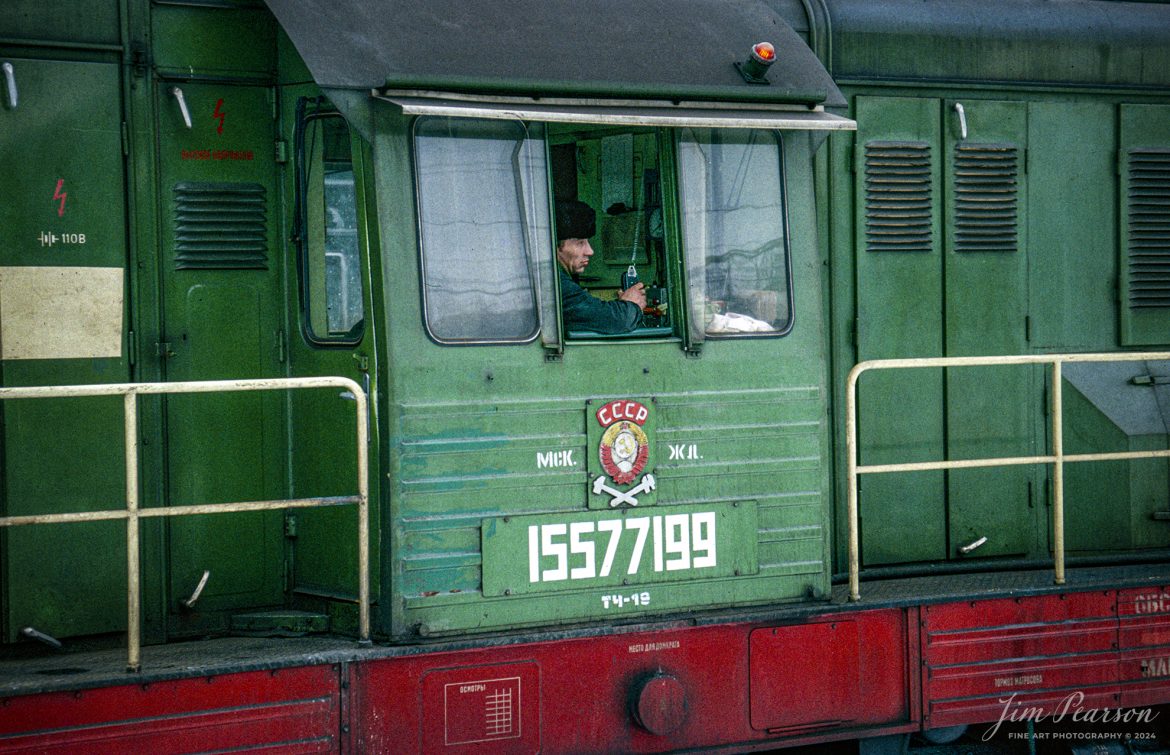The engineer on Russian Diesel locomotive 15577199 waits for permission to depart from the yards at Moscow, Russia sometime during the winter months of 1992. This image is from a slide scan that I shot while I was taking part in a military humanitarian called Provide Hope.
For awhile I was the non-commissioned officer in charge of the Air Force’s Electronic Imaging Center stationed at Aviano, Italy, where Combat Camera was tasked to document the Provide Hope operation. I was there for six months, and we flew missions in and out of the USSR. This was on one trip to Moscow where we spent a couple days in the country, documenting the delivery of supplies to an orphanage. Of course, during my off time, I made sure to visit the train station that was just outside our hotel!
According to Wikipedia: Operation Provide Hope was a humanitarian operation conducted by the U.S. Air Force to provide medical equipment to former Soviet republics during their transition to capitalism. The operation was announced by Secretary of State James A. Baker, III on January 22–23, 1992 and the initial shipment of supplies was sent on February 10, 1992. Twelve US Air Force C-5 and C-141 was carrying an estimated 500 tons of bulk-food rations and medicines into Moscow, St. Petersburg, Kyiv, Minsk, and Chisinau from Germany and Yerevan, Almaty, Dushanbe, Ashkhabad, Baku, Tashkent, and Bishkek from Turkey. In total, for nearly two weeks sixty-five missions flew 2,363 short tons (2,144 t) of food and medical supplies to 24 locations in the Commonwealth of Independent States during the initial phase of operation. Much of these supplies was left over from the buildup to the Persian Gulf War.
Small teams of US personnel from various government agencies (On-Site Inspection Agency, USAID, and USDA) had been placed in each destination shortly before the deliveries, to coordinate with local officials and to monitor to the best extent possible that the deliveries reached the intended recipients (i.e., orphanages, hospitals, soup kitchens, and needy families).

